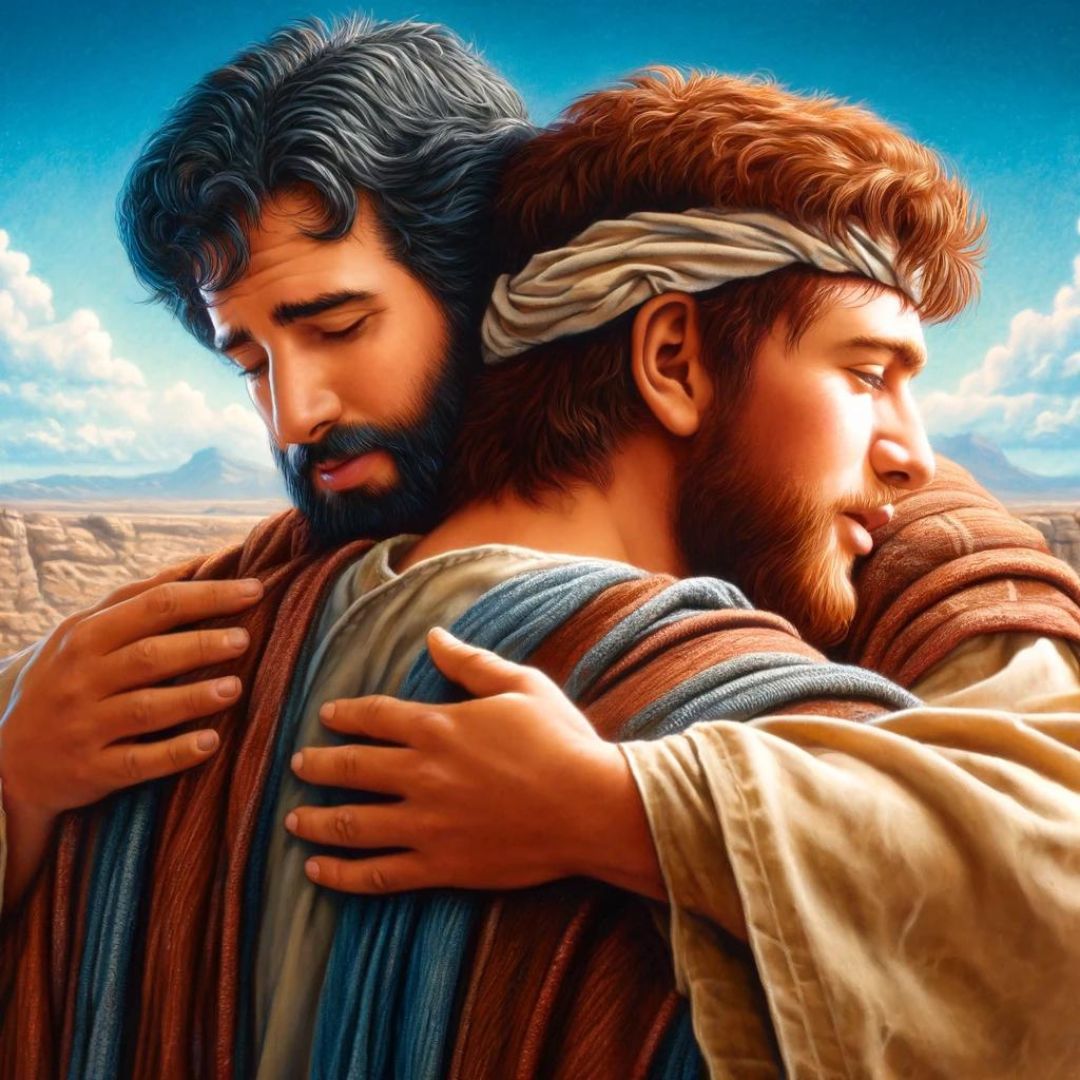
Mending Fences Week 1 and 2

Old Testament Example:
In the biblical narrative found in Genesis 32-33, we encounter the profound story of Jacob and Esau, two brothers whose relationship was deeply marred by deceit and rivalry. This tale is a poignant exploration of estrangement and the redemptive power of reconciliation.
Jacob, the younger of the two, resorts to cunning and deception to secure the blessing that rightfully belonged to Esau, his elder brother. By tricking their father, Isaac, Jacob not only usurps Esau’s blessing but also sets off a chain of events that leads to intense familial strife. Esau’s fury and sense of betrayal are so great that Jacob is forced to flee his home to escape his brother’s wrath. This separation marks the beginning of a long period of estrangement filled with tension and unresolved conflict.
Years pass, and Jacob, now a man with his own family and wealth, realizes the need to mend the broken relationship with Esau. Motivated by a mix of fear, guilt, and a genuine desire for reconciliation, Jacob sets out to seek his brother's forgiveness. In a significant act of humility and repentance, he prepares to meet Esau by sending ahead generous gifts, hoping to appease him and show his sincere regret for his past actions.
As Jacob approaches Esau, he bows down to the ground seven times, a gesture of deep humility and respect. This act is symbolic, demonstrating Jacob’s willingness to make amends for his previous deceit. The scene that unfolds is one of the most moving moments in the Bible: instead of the expected anger and retribution, Esau runs to meet Jacob, embracing him and weeping. This poignant reunion is a powerful testament to the transformative power of forgiveness and the healing that comes from the willingness to make amends.
Esau’s forgiveness of Jacob, despite the deep hurt caused by his betrayal, illustrates the profound impact of humility and repentance in mending fractured relationships. This story serves as a timeless reminder of the importance of seeking reconciliation and extending grace to those who have wronged us. It highlights the possibility of healing and restored harmony, even in the face of significant estrangement and conflict.
The reconciliation of Jacob and Esau is more than a personal reunion; it is a profound lesson in the power of forgiveness and the courage required to seek and offer it. Their story encourages us to confront our own broken relationships with a spirit of humility and a willingness to make amends, trusting in the possibility of renewed connections and restored peace.

New Testament Example:
Jesus and Peter: A Story of Forgiveness and Restoration
In the narrative of Jesus and Peter, we encounter a powerful testament to the depths of forgiveness and the restoration of broken relationships. Peter, one of Jesus’ closest disciples, faces a moment of profound weakness and fear, leading him to deny knowing Jesus three times during the events leading up to the crucifixion. This triple denial, occurring at a time when Jesus most needed support, could have been seen as an unforgivable betrayal, one that might render their relationship irreparable.
However, the story takes a transformative turn in John 21:15-19, following Jesus’ resurrection. Jesus appears to His disciples on the shores of the Sea of Galilee, where He shares a meal with them. After breakfast, Jesus addresses Peter directly, initiating a profound conversation that would become a cornerstone of Christian understanding of forgiveness and redemption.
Jesus asks Peter three times, “Do you love me?” This thrice-repeated question mirrors Peter’s three denials, creating a poignant parallel that is both a reminder of Peter’s failure and an opportunity for his redemption. Each time Peter affirms his love, Jesus responds with a commission: “Feed my lambs,” “Take care of my sheep,” and “Feed my sheep.” These commands are not merely tasks; they symbolize Jesus entrusting Peter with the responsibility of leading and nurturing the early Christian community.
This act of reinstatement is significant on multiple levels. Firstly, it demonstrates the depth of Jesus’ forgiveness. By giving Peter the chance to reaffirm his love three times, Jesus provides a path to healing and redemption that directly addresses the betrayal. It’s a deliberate and compassionate act that acknowledges Peter’s remorse and offers him a way to reconcile with his own actions.
Secondly, Jesus’ trust in Peter’s future leadership reflects an extraordinary act of grace. Despite Peter’s failure, Jesus looks beyond his moment of weakness to see his potential for faithfulness and strength. Jesus' commission to “feed my sheep” is a profound statement of trust and empowerment, illustrating that true forgiveness involves not only absolving past wrongs but also believing in the restored potential of the forgiven person.
This interaction between Jesus and Peter is a powerful example of how broken relationships can be mended through genuine repentance, forgiveness, and restoration. It emphasizes that no failure is too great to be redeemed and that true forgiveness can rebuild trust and renew purpose.
For believers, this story serves as a profound encouragement to seek reconciliation in their own lives. It reminds us that even the deepest wounds can be healed through the grace of forgiveness and that relationships, once broken, can be restored to even greater strength and purpose. Jesus’ example shows that forgiveness is not merely about overlooking faults but about actively restoring and uplifting those who have fallen.
In essence, the restoration of Peter is a vivid illustration of the redemptive power of love and forgiveness, offering hope that no relationship is beyond repair when approached with genuine contrition and divine grace. It challenges us to extend the same depth of forgiveness to others, to see beyond their failures, and to trust in their potential for transformation and growth.
